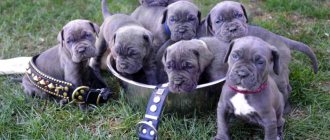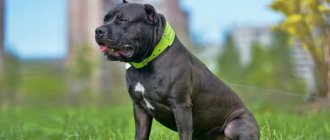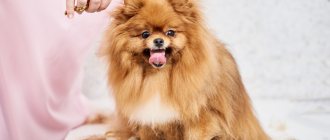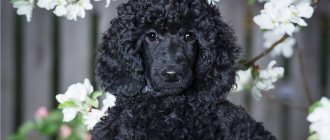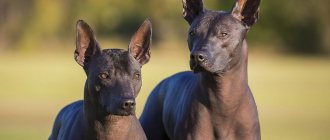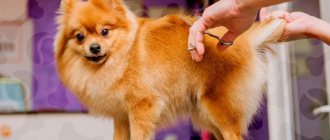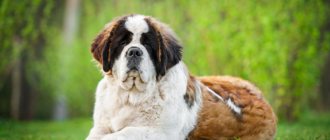Owners of private houses who want to have a guard and a companion should pay attention to Tibetan mastiffs. Of course, a pet will not be cheap. Representatives of one of the most expensive dog breeds require expensive care. But the investment will pay off with the love of the animal and the opportunity to earn money from breeding.
There are dozens of dog breeds in the world. Some appeared relatively recently. Others have coexisted with humans for centuries. Tibetan Mastiffs belong to the second category. These intelligent, massive dogs were long unknown outside their high-altitude home.
History of the breed
There is a legend that the Tibetan mastiff is the riding animal of the Enlightened Buddhas. The genetic age of the breed is very impressive and it is impossible to determine exactly. Many consider him the progenitor of all Molossians in Europe. The breed has retained its original appearance and protective qualities due to strict selection. They were always busy guarding the territory and the owner, warning of the approaching danger of an earthquake and avalanche. Dogs accompanied monks, protected merchants from robbers and lived in rich houses. The Tibetan Mastiff is valued all over the world due to the rarity of the breed and its qualities. Purebred Tibetans are valued very highly and are expensive.
Currently, in China, Tibetan mastiffs are kept in closed kennels under protection. It is very difficult to visit the nursery, but they are considered the best in the world.
So what are the differences between the European type of Tibetan mastiff and the Chinese one, let’s find out?
On the left is the so-called Chinese type, on the right is the European type of Tibetan mastiff.
I immediately want to say the following: while in China they ate dogs and they could not be kept in houses and apartments (until 2005), European breeders, with strict adherence to breeding and strict legislation, preserved and supported Tibetan Mastiff breed. Pedigree dogs have been brought from Nepal and Tibet (de jure China) since the middle of the last century.
Character of the Tibetan Mastiff
- Calm
- Wayward
- Balanced
- Detached, aloof
- Protective
- Stubborn
- Unobtrusive
- Independent
The most expensive breed in the world. In Russia there are several hundred or even dozens of purebred dogs. In 2009, an elite Tibetan Mastiff puppy was sold in China for $600,000.
What conditions make up a dog's character? It is widely believed that the character of a four-legged pet is determined at the genetic level. Also, many people close to cynology argue that character traits are nothing more than the consequences of training and daily upbringing of a puppy. The conditions under which the pet is kept also play an important role. You should not expect your pet to be sociable and friendly towards people if he has been shouted at since childhood, waved at with a leash, or with a newspaper.
Experienced dog breeders will certainly say that if you want to achieve mutual understanding with your own pet, then you must match in temperament and in some character traits. To correctly choose the breed that suits you, first study this issue theoretically: consider the exterior of the dogs you like, read the breed standard, pay attention to the description of the temperament and characteristics of the breed's behavior, ask questions to the real owners of the breed you are interested in. If, in theory, you are satisfied with the breed of your future pet, go to a nursery, or to people engaged in private breeding. A competent breeder who cares about his breed will readily respond to your requests for help in selecting a puppy. It is difficult to say with certainty what kind of character your chosen dog will grow up to be in such a short period of time. There are several simple tests with which you can choose a little friend with the qualities you need.
Why is the breed considered the most expensive?
Tibetan Mastiffs have set records at auctions several times. In 2009, the puppy, later named by the owner Yang Tzu No. 2, was sold for $0.5 million. After 2 years, the owner purchased a young giant mastiff (90 kg at 11 months) for $1.5 million. The most expensive representative of the breed became a dog that was sold in 2014 for $1.95 million. The new owner, a major Chinese businessman, gave the pet his own servant.
Most of the record holders belonged to the “local” subspecies and had the red coat color popular in the PRC. These super expensive dogs are considered a symbol of wealth and a sign of high status among the Chinese elite. The Chinese are also often accused of artificially increasing prices for animals. Dog experts explain the high cost of puppies of this breed by their rarity: purebred mastiff puppies are as rare as pandas, the national treasure of China.
Tibetan Mastiff: features of the breed
- One of the largest dogs in the world . Before purchasing, make sure you are ready to keep and care for such a large dog.
- Long walks . The dog is hardy and tolerates low temperatures well. You need to walk at least 2-3 hours a day.
- For experienced owners . Although the dog has a calm character, it is very capricious and needs control over its behavior while growing up.
- Challenging behavior . This is due to late maturation: males are formed by 4 years, females by 2-3 years. Bitches usually come into heat once a year.
- Aggressive . A dog can be aggressive if there is no training and early socialization.
- Excellent security guards . The dog only defends its territory. Reacts instantly to any signs of danger. The dog fearlessly attacks the enemy, even if he is superior in strength and size.
- Independent . Dogs behave independently of their owner.
History of the origin of the breed
Tibetan mastiffs have been mentioned since ancient times, although they are still surrounded by various myths and legends. Aristotle and Marco Polo, along with other authors, sang in their writings the natural strength, intelligence and power of this breed. At that time, even the bark of mastiffs was considered unique, corresponding to the breed characteristics of the dog. Many dog experts around the world paid tribute to the origin of mastiffs, as well as their place in Tibetan culture. In this regard, they spared no effort and time to study this breed.
Interesting to know! According to some assumptions, the Tibetan Mastiff represents the ancestor of the entire Molossian group and its corresponding dog breeds. Since these speculations have never received scientific confirmation, they are considered erroneous.
The very first individual representing the Tibetan Mastiff breed appeared in Western Europe when Queen Victoria received such an animal as a gift from Lord Harding. At the end of the nineteenth century, a pair of Tibetan mastiffs appeared in England, which were brought by Edward VII. In 1898, the first recorded offspring of Tibetan mastiffs appeared at the Berlin Zoo.
Care and maintenance
- Swim only in the warm season if necessary.
- Brush weekly.
- Trim nails once every 2 months.
Basic rules for caring for a dog
- Dental care. It is enough to examine the teeth and oral cavity of the Tibetan Mastiff once a week. As for the care itself, during a thorough examination you should pay attention to: The condition of the gums - if they are red and inflamed, it is recommended to contact a veterinarian who will recommend special medications or remedies;
- Teeth color – ideally, it should remain normal, without plaque (you can clean it yourself) and purulent formations. To maintain teeth in good condition, special bones and toothpastes for dogs can be very useful;
- Dental health – check for loose or broken teeth. Between them there should also be no food residues, the accumulation of which causes the animal to develop an unpleasant odor from the mouth and subsequently rot;
- The presence of tartar - in this case, it is impossible to do without the intervention of a veterinarian and its removal. It should also be noted that an important factor for the health of the Tibetan Mastiff - and in particular teeth - is proper balanced nutrition.
Remember that all dog grooming procedures help to establish a relationship with the dog and train him to be disciplined. Regular checking of a Tibetan Mastiff puppy will develop into a kind of obligatory and pleasant communication procedure. If you notice any changes in behavior or find any unexplained sores or redness, contact your veterinarian.
Health
The dog is very healthy and not susceptible to any diseases. The most common problems are:
- Dysplasia of the hip and elbow joints.
- Rickets.
- Hypertrophy and dystrophy of bones.
- Osteochondritis.
- Panostitis.
Preventative measures to protect your Tibetan Mastiff puppy
- To keep your Tibetan Mastiff puppy completely safe, you first need to minimize his contact with unfamiliar dogs, especially strays. Therefore, you should not let your dog off the leash, as in this case it will become impossible to control its behavior and communication with other dogs. Since a dog can easily become infected with distemper from simply touching the nose of a sick animal. This disease can be transmitted to a dog through sniffing. Your dog can become infected with trichophytosis from contact with the lichen-affected fur of a sick dog. Naturally, it is impossible to completely exclude a dog’s communication with other dogs, since it must be socialized. Therefore, try to find friends with dog lovers who look after their animals. By adhering to this rule, you can eliminate the risk of pathogen transmission by 80%.
- You should walk your dog in places where there are no landfills. Since garbage very often attracts rodents, which in turn are very often carriers of various infections. Gray rats are especially dangerous because they carry such a serious disease as leptospirosis.
- You should not allow your dog to sniff other people's feces, as they are a source of worms.
- Monitor the well-being of your Tibetan Mastiff. Pay attention to even the most minor changes in his behavior. For example, your dog may appear lethargic, lose his appetite, or have a dry nose. Or you may notice that the dog begins to shed, and this has nothing to do with seasonal shedding. If hair loss becomes excessive, this is the first symptom indicating health problems in your pet. And only you can help him. Therefore, it is important to take the dog to the veterinary clinic in time, where the disease can be overcome for sure. In no case should you ignore the symptoms, since advanced infections are much more difficult to treat, and sometimes even impossible. If you start treating your dog, the disease can lead to his death or he will develop serious complications that will affect his hearing, vision, limbs and much more.
By bringing such a dog to Russia, you can get a registered pedigree.
To do this, you will have to show it to three experts at an exhibition in the Tibetan Mastiff ring. Having received three positive ratings with a description, you can get a zero pedigree, in which only he appears, without indicating his ancestors.
A zero or registered pedigree is, in short, an official confirmation that a dog belongs to a certain breed, based on the opinion of an expert at a dog show!!! Unfortunately, it is currently only valid in the Russian Federation.
Your pet will be able to attend any exhibitions and competitions, but only within Russia. He will not be able to attend any international exhibition. Such discrimination is caused by the fact that his blood ancestors and their characteristics are not indicated in the primary. This means that it cannot be said with complete confidence that he has received all the important breed qualities that are inherited.
It is quite easy to understand what kind of pedigree your pet has. If there is an R next to the pedigree number, then it is registered. ✍
